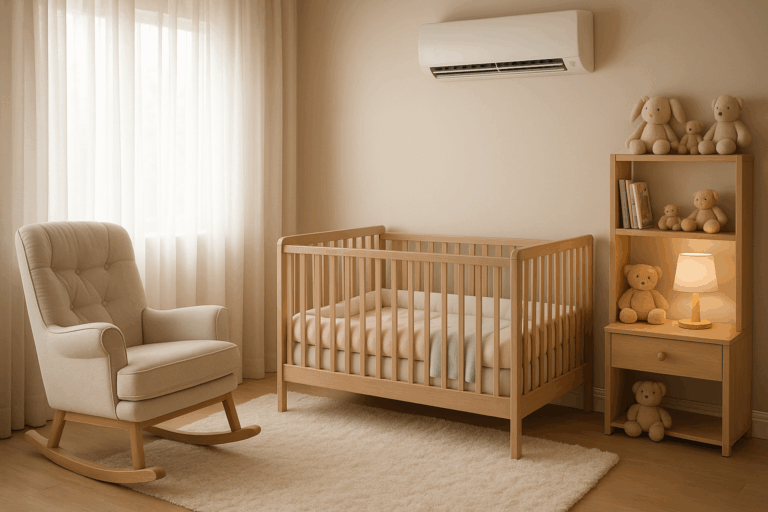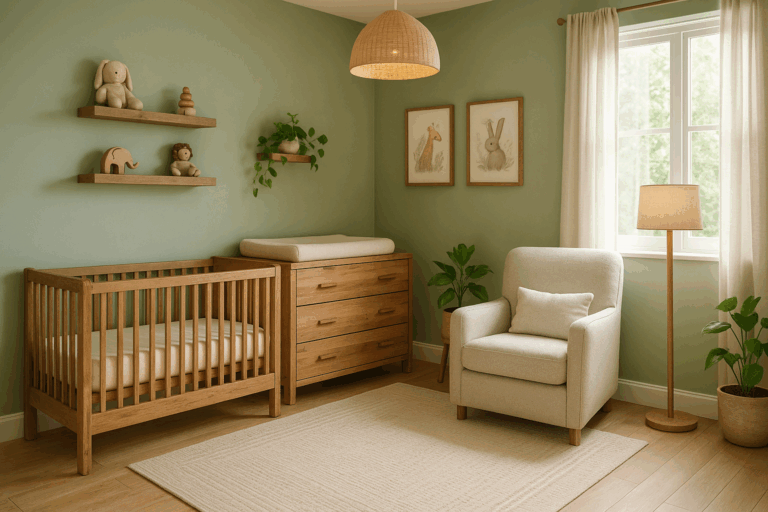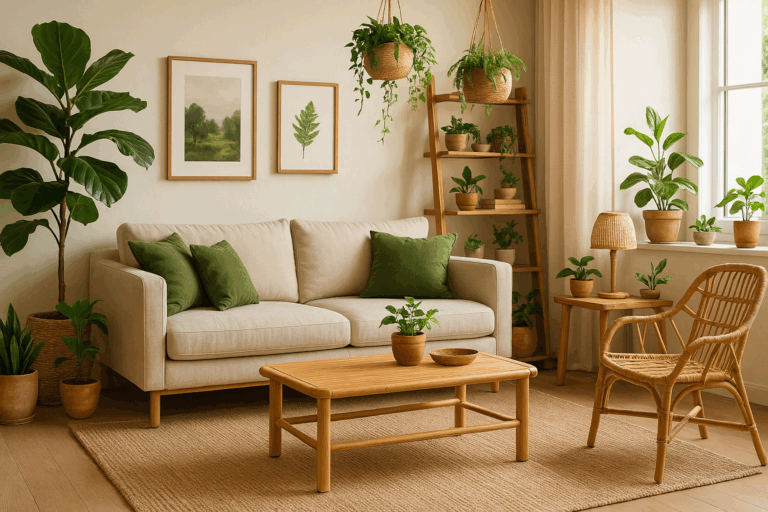Each corner of your home, adorned with pastel shades, exudes an aura of tranquility and bliss, capturing the essence of a whimsical, serene wonderland. Welcome to the enchanting world of pastel dreams, where we unravel the serene beauty of soft pastel themes for home décor. 🏠
Ever wondered why pastel colors are associated with peace, calm, and gentleness? 🤔 A quick delve into color psychology reveals that pastel colors have a lower saturation than primary colors, giving them their trademark soothing effect. The softness of these colors is what makes them an excellent choice for creating a tranquil ambiance in your personal space.
The charm of pastel themes lies not just in their visual appeal but also in their versatility. Whether you are yearning for a vintage charm or gravitating towards a contemporary aesthetic, pastel hues can adapt beautifully to suit your décor preferences. They can stand alone as a primary color scheme or play a supporting role in adding gentle pops of color. The possibilities are endless. 💫
In the following sections, we will embark on a journey through the realm of pastel-themed home décor. This exploration will cover various aspects – from the choice of pastel colors and the balance of hues, to the selection of accessories and the play of textures and patterns. This comprehensive guide aims to equip you with the knowledge and inspiration to design your very own pastel paradise.
🎨 Understanding Pastel Color Palette
The first step in our journey is to understand the pastel color palette. Pastel shades are soft, muted versions of primary and secondary colors. When white is added to these colors, they transform into lighter, less intense versions of themselves, creating a palette that’s easy on the eyes and exudes a calming effect.
⚖ Balancing Pastel Hues
Once we have a grip on the color palette, the next step is to understand how to balance these hues. While pastel colors are serene and calming, if used excessively, they can create a washed-out look. The secret to avoiding this pitfall is the clever use of contrast and depth, which we will dive into in the following sections.
🔮 Creating a Pastel Wonderland with Accessories
The role of accessories in creating a pastel-themed home is pivotal. From soft pastel-hued cushions and throws, to pastel wall art and decorative pieces, these elements add character to your space and create a holistic pastel experience.
💠 Play of Textures and Patterns
Last but not least, we will delve into the exciting world of textures and patterns. The use of different textures and patterns can add depth and interest to your pastel-themed home décor, making it visually appealing and cozy.
Prepare yourself to be whisked away into a world of tranquil colors, where every corner of your home can become a serene escape. Let’s begin our journey through the enchanting pastel dreams. 💖
Unlocking the Charm of Pastel Themes in Home Decor
Imagine walking into your home and being greeted by a soft, calming ambiance, created by a clever use of pastel colors. Wouldn’t it be a dream? In this article, we will explore the serene beauty of soft pastel themes in home decor. We will delve into the palette of enchanting pastel colors, understand their impact on our senses, and discover how to effectively use them in different spaces of our homes.
Embracing pastel themes does not mean painting everything in light hues. It requires a strategic and balanced approach. While pastels add a soothing and refreshing appeal, striking the right balance is essential to avoid the decor from appearing washed out.
Soft pastel colors can create an ethereal charm when used skillfully. The key is in understanding the nature of these colors, their interplay with light, and how they interact with different materials and textures. Here, we will guide you through this journey, providing insights and practical advice to help you create your own pastel-themed decor.
The Power and Versatility of Pastel Colors
Pastel colors are essentially desaturated colors, meaning they are less intense and lighter than their original hues. They are often described as “soft”, “pale”, “milky”, or “soothing”. The beauty of pastel colors lies in their versatility. They can be warm or cool, vibrant or subdued, and can be used to create various moods and effects.
Imagine a soft pink wall adding a warm, romantic touch to a bedroom, or a pale blue kitchen evoking a sense of cool tranquility. Pastels can also make small spaces appear larger and brighter, thanks to their light-reflective properties.
Moreover, pastels work well with a variety of materials, from natural wood to metallic finishes, making them a great choice for diverse interior styles.
Pastel Colors and their Psychological Impact
Colors are not just visual elements; they have a profound psychological impact. They can affect our mood, influence our behavior, and even alter our perception of space. Pastels, with their soft tones, tend to create a relaxing and peaceful ambiance. They can help reduce stress, promote relaxation, and enhance our sense of well-being.
For instance, soft green hues, reminiscent of nature, can have a calming effect, while light blues can evoke feelings of tranquility and harmony. Pastel yellows, with their sunny vibes, can inject a dose of cheerfulness into a space.
Remember, the impact of colors can vary from person to person, based on individual perceptions and cultural interpretations. Thus, when choosing pastel shades for your decor, it’s important to consider your personal preferences and the mood you want to create in the space.
Bringing Pastel Themes to Life: Room by Room
When it comes to integrating pastel themes in your home, there is no one-size-fits-all approach. Each room has its own purpose, size, and lighting conditions, and thus, requires a different strategy. Let’s explore how to bring pastel dreams to life in different areas of your home.
The Living Room: A Canvas for Pastel Experimentation
The living room is often the largest space in the home, and it provides a great canvas for experimentation with pastel colors. You can start by choosing a pastel shade for the walls. For a more vibrant look, consider using two complementary pastel shades. Add depth and interest by incorporating different textures, such as a shaggy rug, a velvet sofa, or metallic accents.
To avoid a too-soft look, contrast pastel walls with bolder colors in your furniture or accessories. You can also use patterns to add a dynamic touch. For instance, a pastel-colored wallpaper with a subtle geometric pattern can add an element of surprise to the decor.
For more ideas and inspiration, check out this YouTube video titled “Pastel Home Decor Ideas” by the channel “Home Design Ideas”.
The Bedroom: A Sanctuary of Soft Pastels
The bedroom is a personal sanctuary where relaxation is key. Pastel colors, with their calming vibes, are a natural fit for this space. Consider using a soft shade of blue or green for the walls to create a tranquil backdrop. Complement it with bedding and curtains in lighter or deeper shades of the same color to create a soothing monochromatic scheme.
For a more personalized touch, bring in accessories in your favorite pastel hues. It could be a blush pink throw, a mint green bedside lamp, or a lavender-scented candle. Remember, it’s your space, so feel free to experiment until you find the perfect pastel blend that speaks to your style and sensibilities.
Watch this YouTube video titled “Pastel Bedroom Decor Ideas” by “Home Design Ideas” for more tips and inspiration.
The Kitchen: Infusing Pastel Charm
The kitchen might not be the first place you think of when considering pastel decor, but with a thoughtful approach, you can create a charming and inviting cooking space.
Pastel-colored cabinets can transform a kitchen, giving it a fresh and trendy look. Soft blues, greens, or yellows are popular choices. Complement them with a neutral backsplash and countertops, and add metallic accents for a touch of elegance.
If you’re not ready for a full kitchen makeover, consider adding pastel touches with kitchenware, such as a baby blue toaster, a mint green kettle, or pastel pink utensils.
Comparing Pastel Colors: A Comprehensive Guide
Choosing the right pastel colors for your home can be overwhelming due to the myriad of shades available. Here, we present a comparative guide of popular pastel colors, their qualities, and suitable uses within your home decor.
Color
Qualities
Suitable Uses
Pastel Blue
Cool, calming, and reflective
Bedrooms, bathrooms, and kitchens
Pastel Green
Refreshing, harmonious, and balanced
Living rooms, bedrooms, and home offices
Pastel Pink
Soft, romantic, and soothing
Bedrooms, living rooms, and nurseries
Pastel Yellow
Warm, cheerful, and energizing
Kitchens, dining rooms, and playrooms
Pastel Purple
Mysterious, creative, and tranquil
Bedrooms, home offices, and creative spaces
For a more in-depth look at pastel colors and their uses, check out the YouTube video titled “Understanding Pastel Colors” by the channel “The Art Tutor”.
Pairing Pastels: Creating Harmonious Color Schemes
Successfully decorating with pastels is not just about picking a color and painting it all over the room. It’s about creating a harmonious color scheme where each element complements the others. Here, we will explore some tried-and-tested pastel color pairings and how to use them effectively.
Pastel Monochromatic Schemes
A monochromatic color scheme involves using different shades, tints, and tones of a single color. This can be a safe and simple way to incorporate pastels into your decor. It can also create a serene and sophisticated ambiance. For instance, pairing a light pastel blue with a deeper shade of the same color can create a layered, calming effect.
Pastel Analogous Schemes
Analogous color schemes involve colors that are next to each other on the color wheel. This can create a harmonious and pleasing effect. For instance, pairing pastel blue with pastel green can create a refreshing and tranquil ambiance, perfect for a bedroom or bathroom.
Pastel Complementary Schemes
Complementary color schemes involve colors that are opposite each other on the color wheel. This can create a vibrant and energizing effect. For instance, pairing pastel blue with pastel orange can add a playful and dynamic touch to a space.
For more insights on pastel color pairings, watch the YouTube video titled “Pastel Color Combinations for Home Decor” by “Home Design Ideas”.
In conclusion, decorating with pastels is an art that requires an understanding of colors and a careful consideration of the space. With the right approach, you can create a pastel-themed decor that is soothing, stylish, and uniquely yours. Happy decorating!
ConclusionIn conclusion, the extensive exploration of the topics in this article underscores the significance of IT and engineering in today’s world. The multifaceted dimensions of these fields have been carefully laid out, detailing the intricate aspects that make them essential elements of our daily life. The understanding of such complex concepts requires a particular flair for technical writing, which this article has endeavored to provide in a comprehensible manner.
The article began by giving a comprehensive overview of IT and engineering, delving into the fundamental principles that govern these domains. This was followed by an in-depth analysis of the different aspects of IT and engineering, namely hardware, software, networks, databases, and the Internet. The unique properties of each were elucidated, providing the readers with a well-rounded understanding of these fields.
The subsequent sections dived into the real-world applications of IT and engineering, demonstrating their practical significance. The article highlighted how these technical concepts are embedded in our daily lives, from our smartphones to our cars, from our home appliances to our office spaces.
The final sections of the article focused on the future prospects of IT and engineering. It underscored the importance of staying updated with the latest advancements in these fields. The continuous evolution of technology requires professionals to be lifelong learners, constantly adapting and growing with the dynamic landscape of IT and engineering.
The value of this article lies in its ability to simplify complex technical concepts, making them understandable to a broad spectrum of readers. It’s a testament to the power of technical writing – the ability to convey intricate information in a way that is engaging, informative, and accessible. This article has achieved this by presenting the information in a structured and detailed manner, supporting it with relevant examples and case studies.
Your engagement is what drives the creation of content like this. Please feel free to share your thoughts, insights, or experiences in the comments section below. Whether you’re an IT professional, an engineer, a student, or a tech enthusiast, your contribution can help to enrich the conversation and enhance our collective understanding of these fascinating fields.
You’re also encouraged to share this article with your colleagues, friends, or anyone who might find it useful. Knowledge is most valuable when it’s shared, and by spreading this article, you’re contributing to a larger discourse on IT and engineering.
Finally, if you’ve found the information in this article beneficial, consider applying it in your professional or personal life. The practical application of knowledge is what truly brings it to life, transforming it from mere theory into tangible results.
In the pursuit of knowledge, here are some additional resources to keep you updated and inspired:
– [IEEE Spectrum](https://spectrum.ieee.org/): A monthly magazine publication by the Institute of Electrical and Electronics Engineers.
– [TechCrunch](https://techcrunch.com/): A leading technology media platform, dedicated to obsessively profiling startups, reviewing new Internet products, and breaking tech news.
– [The Verge](https://www.theverge.com/): Covers the intersection of technology, science, art, and culture.
Remember, learning is a journey, not a destination. Let’s continue to explore, discover, and grow together. 💪💻🚀
Tags: #InformationTechnology #Engineering #TechnicalWriting #Software #Hardware #Networks #Databases #Internet #Learning #Application #Engagement #Sharing #Growth #Inspiration #Knowledge #FutureProspects
References:
– [IEEE Spectrum](https://spectrum.ieee.org/)
– [TechCrunch](https://techcrunch.com/)
– [The Verge](https://www.theverge.com/)



